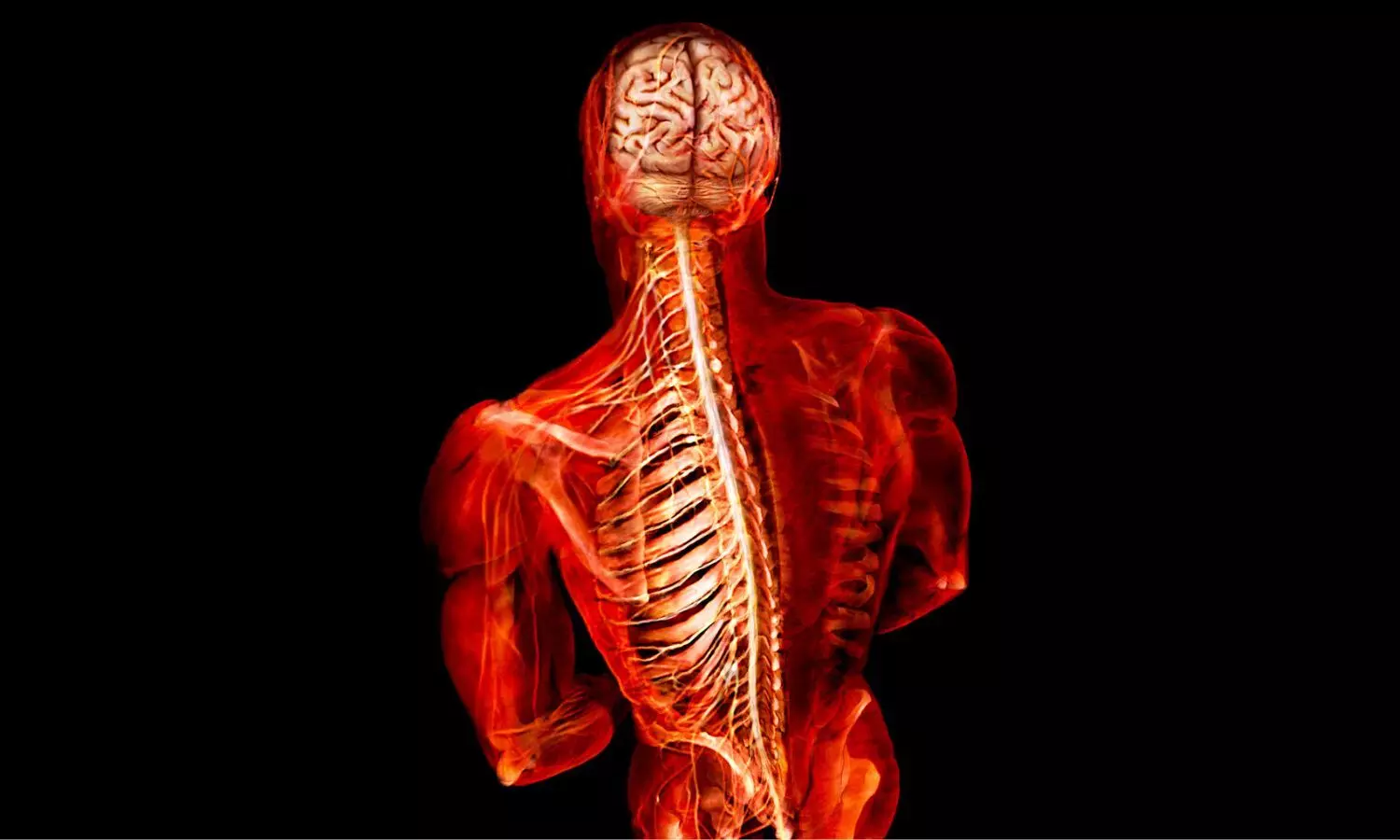India could bear biggest impact from chikungunya, new maps suggest
Powered by WPeMatico
Powered by WPeMatico
Powered by WPeMatico
Powered by WPeMatico
Powered by WPeMatico
Powered by WPeMatico

New Delhi: A shocking video from Vardhman Mahavir Medical College (VMMC) and Safdarjung Hospital, recently posted on social media showed a portion of the ceiling in a boys’ hostel collapsed onto the floor of a medical student’s room. The doctor who uploaded the video claimed that the student sustained minor injuries.
In the video, a part of the roof is seen collapsed on the floor, with debris scattered around, some even landing on a student’s bed. The plaster and part of the ceiling suddenly fell.
The medical student present in the room at the time sustained minor injuries but was immediately given first aid. According to local media report, his condition is stable, and he did not suffer any serious injuries.
Also read- Dr Devaunshi Kaul makes history as first woman president of FORDA
The incident has highlighted the poor infrastructure and living conditions of students in the hostel at one of the country’s top medical institutions.
The roof collapse occurred on the 7th floor of the hostel building, often referred to by students as the “Bhoot Bangla.” In his post on X (formerly Twitter), the doctor stated that the condition is so poor it “could claim the life of doctors before the patient.”
Reacting to the incident on X, a doctor recalled: “In my UG days it was already on life support, we’d shifted to the new boys’ hostel by 2nd–3rd year. Looks like the OBH roof finally gave up. The funny part? It still gets “maintenance” money every third month. Classic supervisor–thekedaar nexus. The so-called paint was mostly water.”
A doctor also pointed out that the hospital’s infrastructure problems are not limited to the hostels. He wrote, “Safdarjung’s infrastructure is so bad that if it rains for half an hour, the whole H block gets flooded. In the whole Emergency building there is not a single hygienic washroom for doctors.”
While another doctor said, “It’s worse than the kafala system construction labourers face in the Middle East.”
As per Rashtriya Judgment media report, the hospital administration has assured prompt action, and steps are being taken to inspect the safety of the building.
Powered by WPeMatico

New research from Stockholm has found that individuals with a history of smoking face a significantly higher risk of all four subtypes of type 2 diabetes, with genetic susceptibility further increasing the likelihood.
The characteristics of type 2 diabetes vary from patient to patient and it has been proposed that the condition is made up of four subtypes. Now, new research being presented at the annual meeting of the European Association for the Study of Diabetes (EASD) in Vienna, Austria (15-19 September) shows that smoking increases the risk of the condition, regardless of subtype.
The researchers in Sweden, Norway and Finland also found that people with a genetic susceptibility to develop diabetes seem more vulnerable to the adverse effects of smoking.
It has previously been suggested that type 2 diabetes (T2D) can be divided into the following subtypes: SIRD (severe insulin-resistant diabetes), characterised by insulin resistance (where the body’s cells don’t respond to properly to insulin and can’t easily take up glucose from the blood); SIDD (severe insulin-deficient diabetes), characterised by a lack of insulin; MOD (mild obesity-related diabetes), associated with obesity and younger age of onset; and MARD (mild age-related diabetes) which develops later in life.
Severity, prognosis and risk of complications differ across the subtypes but it is not clear if they have different risk factors.
To find out more, Emmy Keysendal, a PhD student at Karolinska Institutet, in Stockholm, Sweden, and colleagues examined the link between smoking, which is already known to be a potent risk factor for T2D in general, and other forms of tobacco use, and the various subtypes of T2D.
The researchers used data on 3,325 individuals with T2D (495 SIDD, 477 SIRD, 693 MOD and 1660 MARD) and 3,897 controls from a long-running diabetes study in Norway (average follow-up time of 17 years) and a case-control study in Sweden.
They found that ever smokers (current and past smokers) were at higher risk of all four sub-types of T2D than those who had never smoked. The link between smoking and SIRD was particularly strong.
Ever smokers were more than twice as likely (2.15 times) as never smokers to develop SIRD. This compares with increases in risk of 20% for SIDD, 29% for MOD and 27% for MARD.
Smoking was estimated to be responsible for more than a third of SIRD cases, but less than 15% of the other diabetes subtypes (SIDD, MOD and MARD).
Smoking heavily (≥15 pack-years/20 cigarettes a day for 15 years or equivalent) further increased the risk of all four subtypes. Heavy smokers were 2.35 times more likely to develop SIRD than never smokers and 52%, 57% and 45% more likely develop SIDD, MOD and MARD, respectively.
Interestingly, the data on men in Sweden suggested that heavy use of snus, a smokeless tobacco product popular in Scandinavian countries, was linked to increased risk of the severe subtypes SIDD (19% higher risk) and SIRD (13% higher risk) compared to never users of snus.
The study also explored whether smoking further increased the risk in individuals with a genetic predisposition to T2D, insulin resistance or reduced insulin secretion.
This showed that heavy smokers with genetic predisposition to T2D or reduced insulin secretion were particularly vulnerable.
For example, those who smoked heavily and had a high genetic risk for impaired insulin secretion had more than three times the risk (3.52-fold) of developing SIRD compared to those without these risk factors.
The researchers concluded that smoking increases the risk of T2D, whatever the subtype.
Ms Keysendal adds: “It is clear that smoking increases the risk of type 2 diabetes whatever the subtype, that is, regardless, of whether the diabetes is characterised by insulin resistance, lack of insulin, obesity or old age.
“The strongest association was seen for the subtype characterised by severe insulin resistance (SIRD), which suggests that smoking may contribute to diabetes by impairing the body’s ability to respond to insulin.
“Our findings emphasise the importance of smoking cessation in the prevention of type 2 diabetes. They also indicate that genetic information may help identify individuals most likely to benefit from extra support in stopping smoking.”
Reference:
Smoking increases the risk of type 2 diabetes, regardless of its characteristics, European Association for the Study of Diabetes, Meeting: Annual Meeting of the European Association for the Study of Diabetes (EASD).
Powered by WPeMatico

France: The findings of a new study published in JAMA Cardiology suggest that an electrophysiological study (EPS) provides greater accuracy than an electrocardiogram (ECG) in identifying patients with myotonic dystrophy type 1 (DM1) who may benefit from prophylactic permanent pacing.
Powered by WPeMatico

Canada: Empagliflozin did not significantly preserve beta-cell function in women with a recent history of gestational diabetes, according to a randomized, placebo-controlled trial published in Diabetes, Obesity and Metabolism. While the study did not show a clear benefit for beta-cell health, researchers observed signals suggesting the drug might help stabilize insulin sensitivity and fasting glucose, highlighting the need for larger, longer studies.
Powered by WPeMatico
